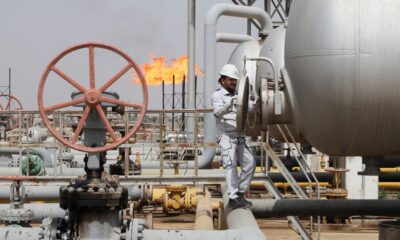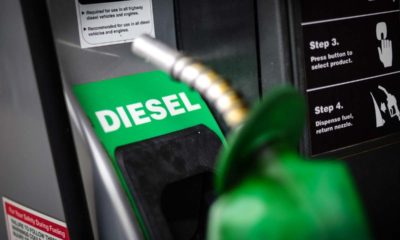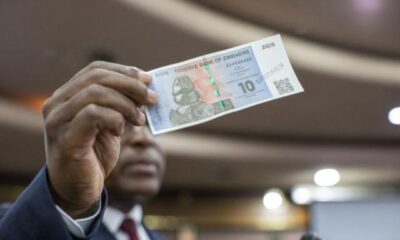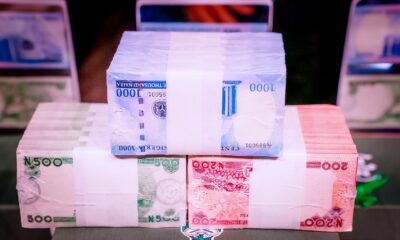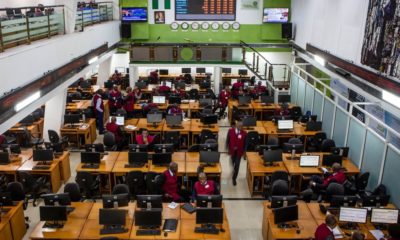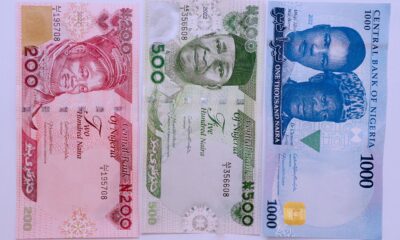Oil markets are on the move this morning, with oil prices dipping by 2.0% in early trading after the Financial Times reported that Saudi Arabia has indicated to western allies it could raise production to cover any substantial fall in Russian production. That follows on from my comments yesterday that this week’s OPEC+ meeting later today could be a pivotal one if Russia is given an exemption from its production quotas, which would allow the two main swing producers, Saudi Arabia, and the UAE, to ramp up exports to fill the gap.
None of that will alleviate the refining bottleneck/crunch that is causing petrol and diesel prices to soar globally, but it would be a rare piece of good news for the global economy and the inflation fight. It certainly isn’t in OPEC’s interests to send the world into a recession, and probably the only loser would be Russia which is making more money today than pre-Ukraine invasion thanks to soaring oil prices. The cynic in me wonders if some back-room horse-trading has gone on between the West and Saudi Arabia/UAE to get to this point. It’s amazing how US gasoline prices and mid-term elections focus the mind. That aside, today’s OPEC+ meeting may even overshadow the US Non-Farm Payrolls release this week, and if it results in sharply lower oil prices, look for a potential rally in equity and bond markets globally as hiking outlooks are pared.
Overnight, exactly the opposite occurred, after mostly robust US data had markets rolling back their over-optimistic expectations that the Federal Reserve wouldn’t have to hike as much as indicated. US JOLTS Job Openings in April eased slightly to 11.4 million, just above expectations and two job openings for every unemployed American. JOLTS Job Quits remained steady at just above 4.4 million. Following on from firm Retail Sales recently, ISM Manufacturing shrugged off the gloom in Asia and Europe by unexpectedly rising to 56.1 versus an expected drop to 54.5. ISM Manufacturing Orders also rose to 55.1, although ISM Manufacturing Prices slipped to 82.2. ISM Employment fell to 49.6 but the JOLTS data suggests that is because of a lack of workers, not easing labour market requirements.
So, despite concerns around the housing market, and rightly so, the US economy continues to fire on all cylinders. Nothing in that data will give the Fed any concerns about the trajectory of rate hikes, so 0.50% hikes until September it is, and quantitative tightening proceeds. The biggest beneficiary was the US Dollar, which soared against the Sterling and Euro overnight, given their soft data this week. That was helped along by US yields along the curve firming modestly. Wall Street equity markets retraced, but I believe the only modest reaction by the bond market, limited the damage. Probably the most head-scratching move was by gold, which rose slightly despite a higher US Dollar. That said, I remain concerned about the recent underwhelming price action by gold.
In Asia today, the calendar is fairly thin with the Manufacturing PMIs now out of the way. Australia’s April Balance of Trade outperformed, rising to AUD 10.495 billion. Retail Sales fell slightly as expected but printed right on forecasts at 0.90%. At midday (SGT), Indonesian Inflation for May is released and is expected to rise slightly YoY to 3.60%. That probably won’t be enough to force Bank Indonesia’s hand and hike rates at the June meeting, and nor has a slightly wobbly Rupiah detracted them from supporting Indonesia’s post-pandemic recovery. A print above 4.0% may change that stance though.
Eurozone PPI will be a non-event after the PMI and GDP prints earlier in the week signalled already, that stagflation is alive and well in the war-time economy of Europe. US Factory Orders will grab some attention, especially if the figure is weaker, and market pundits will try and extrapolate tomorrow’s US Non-Farm release from today’s ADP Employment, usually a fool’s errand. But none of this really matters, because as I have said early, today will all be about the outcome of today’s OPEC+ meeting.
Asian follows the leader.
Asian equity markets are lower today as a thin data calendar and slow news ticker leave them content to produce another follow-the-leader session, coat-tailing the direction of overnight US markets. Robust US data overnight reinforced Fed hiking expectations which saw US equities fall once again. Although I note, that the recent rallies have been much larger in percentage terms than the falls have been, suggesting that bottom-fishing momentum is building as slowdown outlooks increase.
Overnight, the S&P 500 fell by 0.75%, the Nasdaq fell by 0.72%, and the Dow Jones eased by 0.54%. In Asia, US futures remain unchanged today, with the usual counter-trend move to the overnight session almost absent. The fall in oil prices in Asia today has limited the fallout in Asian markets though, with Japan’s Nikkei 225 recouping early losses to be down just 0.05%, although the Kospi has fallen by 0.95%.
Mainland China markets have also pared losses, the Shanghai Composite is down just 0.05%, while the CSI 300 is down just 0.15%. Local markets may also be finding support from the news that the central government has ordered state-owned banking heavyweights to set up a CNY 800 bio ($120 bio) line of credit for infrastructure projects according to Bloomberg. Hong Kong’s Hang Seng is down by 1.20% though, perhaps reacting negatively to a tightening of covid-19 policies once again.
Across regional markets, Singapore has eased by 0.35%, with Taipei losing 0.50%, Kuala Lumpur falling 0.30%, and Jakarta remaining unchanged. Bangkok has lost 0.45%, with Manila retreating by 0.75%. Australian markets are in full retreat, the All Ordinaries and ASX 200 tumbling by 1.10%, with local markets continuing to mirror Wall Street’s price action.
European equity markets should open slightly lower this afternoon by today could be a big day for Eurozone markets, although activity will be diminished with UK markets closed today and tomorrow, and everybody stuck at an airport trying to go on holiday. Everything rests on the OPEC+ meeting today. If Russia is side-lined, I mean exempted from its production quotas, with other members stepping up, European markets could find themselves with a decent tailwind today. A business as usual outcome is likely to see a disappointing reaction.
US Dollar soars versus Euro and Sterling.
The dollar index leapt higher overnight, thanks in part to the heavy weighting of the Euro and Yen in it, which slumped against the greenback. Robust US data and an ensuing extinguishing of hopes that the Fed would need to ease hiking expectations were behind the US Dollar rally. The soggy data from Europe and the UK this week, in contrast to US releases, reinforcing greenback strength.
The dollar index soared 0.75% to 102.54, rising above the long-term triangle line once again, today at 102.35. In Asia prices have remained steady, the index edging up to 102.57. The 100 point move higher has left support distant at 101.75, while the close above 102.50 suggests the index could retest 103.00, especially if US yields rise again today, putting more downward pressure on the Yen, which also has a large index weighting.
EUR/USD fell by 0.75% overnight, with US data leaving Fed hiking expectations on track, while soft GDP data from the Eurozone this week continues to darken its outlook. EUR/USD fell 70 pips to 1.0652, where it remains in Asia. The 1.0800 to 1.0830 region ahead of the multi-decade breakout line looks like an insurmountable barrier for now. Risks are now skewed towards a retest of 1.0600, although if OPEC opens the pumps, the single currency could receive a boost.
GBP/USD is in the same boat as the Euro and fell by 0.93% to 1.2485 overnight, closing below support at 1.2500 which become immediate resistance. The series of daily highs just below 1.2670 has become a formidable barrier now, particularly with the challenging economic environment in the UK staying the BOE’s rate-hike hand. Risks have shifted towards a test of 1.2400. Liquidity will be severely reduced today and tomorrow with UK holidays, meaning Sterling volatility could track higher.
USD/JPY rallied 1.13% higher to 130.13 after US data put the Fed hiking path back on track and US bond yields firmed. With the Bank of Japan and government officials still vehemently sticking to a no rate hike outlook, the US/Japan rate differential and outlook spurred a powerful rally by USD/JPY. The USD/JPY correction looks over for now unless US yields suddenly move lower. Resistance at 130.00 broke overnight and becomes nearby support, followed by 129.00. Resistance lies just above 131.00.
AUD/USD failed ahead of the 0.7250 zone overnight, which contains its 50, 100 and 200-day moving averages. (DMA) As US data hit the wires, AUD/USD retreated to finish almost unchanged at 0.7175. A souring of sentiment could see AUD/USD testing support at 0.7150, opening a potentially deeper correction. Having traced out a series of tops at 0.6560, NZD/USD continued to underperform overnight as sharp economic slowdown fears increase. NZD/USD fell 0.50% to 0.6480 where it remains this morning. Failure of 0.6400 signals an outright reversal and a return to the low 0.6200s.
While currency markets in the DM space remain barely changed in Asia, traders are content to wait and see, there is pronounced weakness in the Asia FX space today. Asian currencies retreated overnight as the Fed’s hike path was confirmed by US data releases, and that has continued in Asia. USD/KRW has risen 0.45%, USD/TWD is up 0.80%, while USD/CNY, USD/SGD, USD/THB, and USD/SGD are all around 0.20% higher. I believe most of the sharp reversals seen overnight and today are due to the amount of risk-seeking hot money that has piled into EM recently, running for the door. The fall by the Euro, AUD and NZD also suggests the same. As such, I do not believe we are at the start of another major move lower by Asia FX yet. That likely requires US 10-year yields to creep above 3.0% again, although gains will be limited as well. Asian FX should also get an OPEC+ boost today if the grouping side-lines Russia and opens the taps.
Oil sinks in Asia on FT/OPEC+ story.
Oil prices have fallen in Asia today after the Financial Times ran a story that Saudi Arabia has indicated to western allies that it could raise oil production if Russian out fell substantially. Overnight, oil gave back all its gains after a WSJ story released yesterday morning suggested that OPEC+ might exempt Russia from its production quotas.
Taken in totality, today’s OPEC+ meeting is assuming far greater importance for global markets than the US Non-Farm payrolls tomorrow. We can expect a very binary outcome from today’s meeting. If OPEC+ does nothing but raise production by the 433,000bpd already planned, oil prices are likely to rally sharply, with knock-on impacts in Asia and Europe equity markets. If Russia is exempted and Saudi Arabia and the UAE (the only two real swing producers), signal they will step up production, we can expect oil prices to fall sharply.
Overnight, Brent crude finished just 0.33% lower at $115.85, having tested $118.50 a barrel intraday. In Asia, is has gapped lower, falling by 1.505 to $114.15 a barrel. The overnight close at $115.85 is immediate resistance, with support at 112.00. There is a very well defined rising 6-month support line on Brent crude at $104.50, with the 100-DMA also nearby. A daily close below this point should allow Brent crude to retest $100.00 a barrel.
WTI also tested higher overnight, rising to $117.85 a barrel, before giving back all its gains to close 0.40% lower at $114.80 a barrel. In Asia, WTI has also fallen by 1.50% to $113.00 a barrel. Immediate resistance is the overnight close at $114.80, with support at $111.60 and then 108.00 a barrel. WTI’s 6-month support line lies at $102.50, followed by the 100-DMA at 101.00. Failure of these levels signals a move back to the mid-90s in the first instance.
Gold defies a stronger US Dollar.
Gold defied expectations overnight, shrugging of slightly firmer US yields and a higher US Dollar to record a 0.50% gain to $1846.65 an ounce. The price action has left me scratching my head a bit, and I can only assume some risk aversion flows lifted gold as the hot money retreated from other asset classes. In the context of gold’s overall performance, I would need to see quite a few more days like this before changing my bearish outlook, with the gains overnight, insignificant in scope. In Asia, gold has eased infinitesimally to $1845.00 an ounce.
Overall, gold remains confined to a $1830.00 to $1870.00 range, and one could argue a $1840.00 to $1860.00 an ounce range. Gold’s inability to rally on recent US Dollar weakness remains a primary concern. Gold has resistance at $1870.00 and then $1900.00, where I suspect there will be plenty of options-related selling. Support is at $1830.00 and then $1780.00 an ounce, and I do not discount a disorderly retreat if the latter fails.





